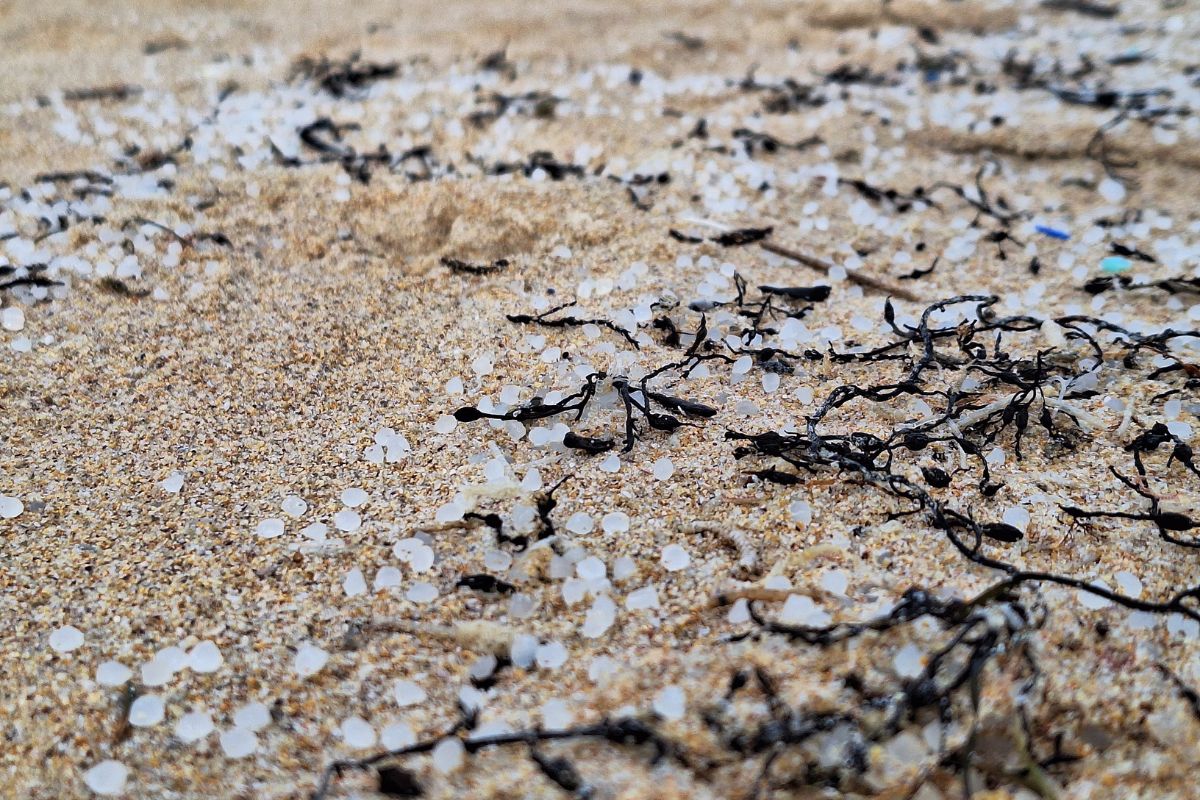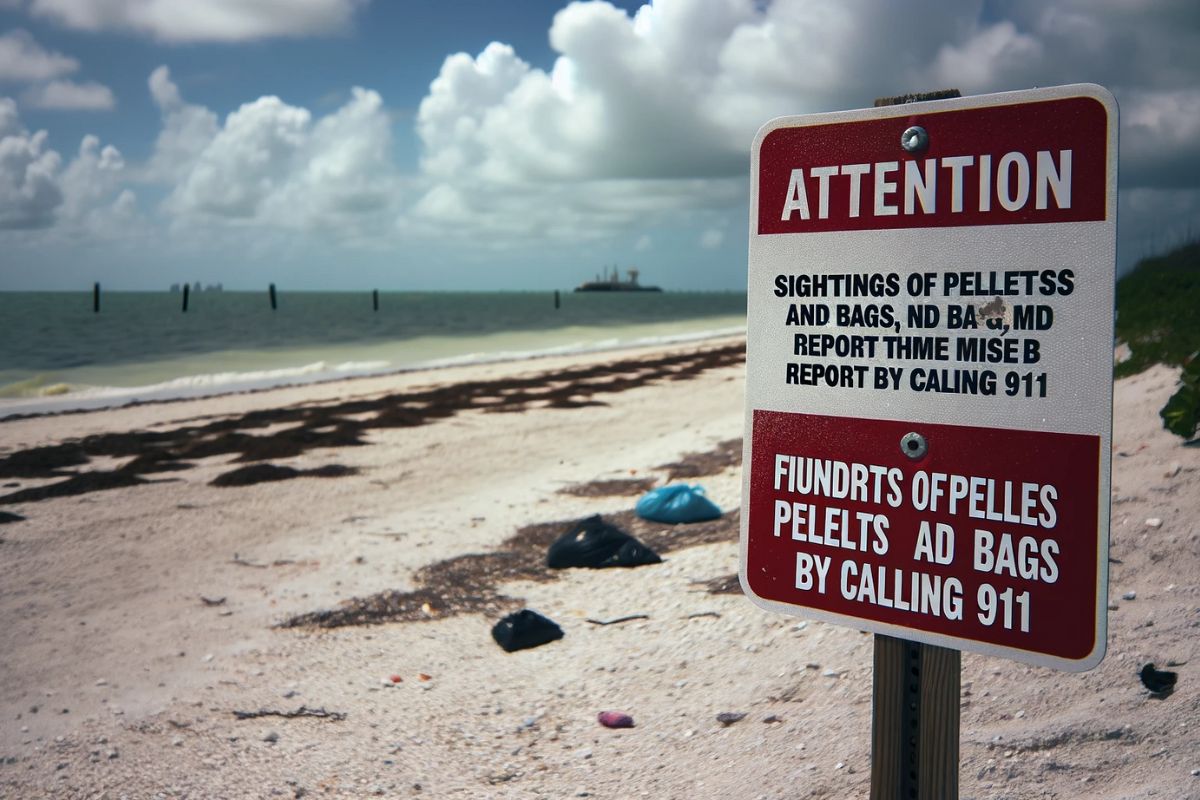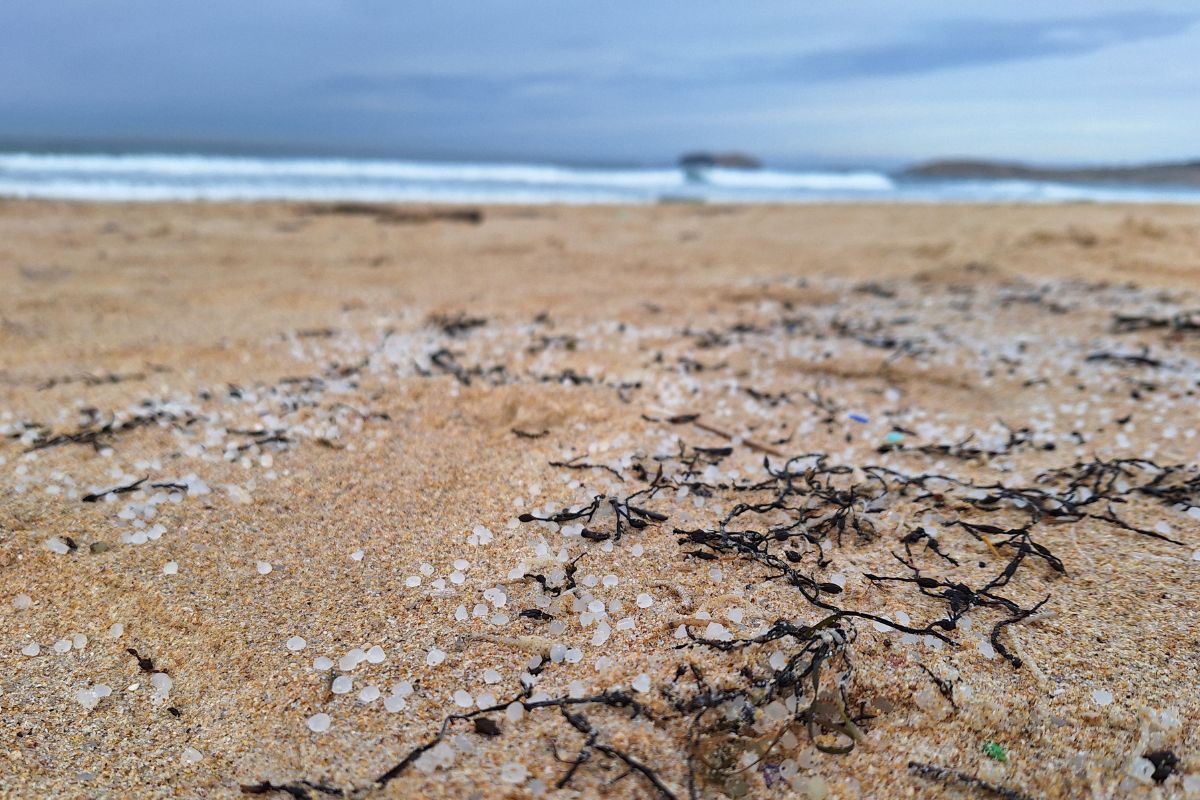In recent weeks, since mid-December, news about a spill pellets along the galician coast has been gradually surfacing. Since December 13, 2023, large quantities of small white pellets similar to plastic have begun to appear on Galician beaches. These are not just small balls, but sacks filled with them, lightweight but containing thousands of them. They are the color of hailstones and the size of a lentil. The first person to find them was a resident of Corrubedo in Riveira (A Coruña).
The merchant ship Toconao, flying the Liberian flag, was carrying cargo containers, including goods from Bedeko Europa, a Polish producer of pellets. About 43 nautical miles west of Viana do Castelo, the lawyer for the shipping company Maersk acknowledges that about 6 containers fell into the sea for still unknown reasons. According to the latest information, there were about 1050 sacks containing 26,250 kilograms of plastic pellets in the containers.
These pellets, not to be confused with small cylindrical fuel material for stoves, are made of polypropylene, a versatile material for plastic and fiber production. They are soft to the touch and have an odor reminiscent of gasoline. They are not inherently toxic to humans, but this spill can affect marine life and also dirty the Galician beaches, not only in Galicia, the most affected region but also already being found in Asturias and Cantabria. This spill pellets along the galician coast, while not as tragic as the “Prestige” oil tanker disaster, is yet another episode of pollution in Galicia.
Areas affected by the pellet spill on the Galician coast
The “ground zero” of the spill is north of the Galician Rías Baixas, on the coasts of Riveira, between the Muros-Noia and Arousa estuaries. However, the affected areas are expanding as they are now being found all along the Galician coastline. This “white plastic tide” is reaching regions like Asturias and Cantabria, where it has been found in San Vicente de la Barquera.

Pellets in Penencia beach, in Ferrol.
More than 30 Galician municipalities are being affected, although unevenly, from Nigrán in the southwest of Galicia to Ribadeo in the northwest. We have witnessed the spill in the Ferrol area, where we have found pellets on beaches such as Penencia, Doniños, El Vilar, and A Fragata. Following the tide’s ebb and flow, usually marked with lines of seaweed, we have found many of these plastics.
How to volunteer to remove pellets from the Galician coast?
The spill pellets along the galician coast is recent, barely a month has passed, and while packages and pellets are already being collected, more are expected in the coming days. Spontaneous groups of volunteers are starting to organize through WhatsApp to clean beaches. However, some believe that it is better to organize in mass when they begin to arrive in larger quantities to optimize efforts.
For those who want to lend a hand, here are the upcoming gatherings at different beaches:
- Tuesday, January 9th:
- Patos and Prado Beaches (Nigrán) at 10:00 AM.
- Barrañán Beach (Arteixo) at 3:30 PM.
- Boa Beach (Noia) from 10:00 AM to 12:00 PM.
- Wednesday, January 10th:
- Doniños and San Xurxo Beaches (Ferrol) at 11:00 AM.
- Samil Beach (Vigo) at 3:00 PM.
- Thursday, January 11th:
- O Castro Beach (Ribeira) at 10:30 AM.
- Espiñeirido and Seráns Beaches (Porto do Son) at 11:00 AM.
- Madorra Beach (Nigrán) at 11:30 AM.
- Baleeiros Beach, Corrubedo (Ribeira) at 4:00 PM.
- Portocubelo Beach, Lira (Carnota) at 3:30 PM.
- Friday, January 12th:
- Aguieira Beach (Porto do Son) at 11:00 AM.
- O Dique Beach (Porto do Son) at 11:00 AM.
- O Piñeirón Beach (O Grove) at 11:00 AM.
- Tuia Beach (Bueu) at 3:00 PM.
- A Illa Beach (Pobra do Caramiñal) at 3:00 PM.
- Barrañán Beach (Arteixo) at 3:00 PM.
- Saturday, January 13th:
- Doniños Beach (Ferrol) at 10:30 AM.
- Orzán Beach (A Coruña) at 11:00 AM.
- Dique Beach (Porto do Son) at 11:00 AM.
- Bares Beach (Mañón) at 11:30 AM.
- Espiñeirido and Seráns Beaches (Porto do Son) at 3:30 PM.
- Sunday, January 14th:
- Doniños Beach (Ferrol) at 3:00 PM.
- Wednesday, January 17th:
- Doniños and San Xurxo Beaches (Ferrol) at 11:00 AM.
- Friday, January 19th:
- O Piñeirón Beach (O Grove) at 16:30 PM.
In the coming days, more groups will be organized to remove the most pellets from the Galician coast. If you are interested in volunteering, you can request to be included in the WhatsApp groups created for organizing cleanup efforts.
Procedure and cleanup tips for pellets on the Galician coast
For cleaning, it is recommended to wear rubber boots, gloves, FFP2 or higher-grade masks, safety glasses, a spray suit, and tools for collecting pellets:
- Brush or broom and dustpan.
- Large tub with seawater.
- Large strainer.
- Garbage bags.
It’s best to work in groups of four people per beach area, regardless of the number of volunteers on the beach. Two volunteers should collect pellets from the surface with sand, another filters the pellets from the tub, and another empties and refills the tub.
Special care should be taken not to step on areas with pellets, and it is recommended to create pathways for emptying and filling the seawater tub. Additionally, with the expected cold wave, it is advisable to dress warmly and wear suitable footwear for walking on sand and rocks.
Finally, call the local municipality or 112 to have the bags with pellets collected. It is recommended to take photos and videos to document the actions performed by the volunteers.

Call 112 and the respective municipality to collect pellets from the Galician coast.
Pilgrim, take action! Avoid throwing plastics on the Camino de Santiago
As pilgrims on the Camino de Santiago, we carry more than just our backpacks. We also carry the responsibility to protect and respect the environment that welcomes us. We must act with environmental awareness and avoid littering plastics and other waste. It’s not just an act of respect for nature and local communities but also a commitment to future pilgrims who will follow in our footsteps. Remember that every small gesture counts, and together, we can preserve the essence and beauty of the Camino for generations to come. Pilgrim, act responsibly!




Leave A Comment